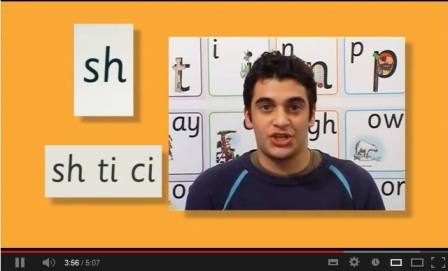Crisp consonants
5 Replies
Adults trying to help learners with their reading and writing often make the mistake of saying single consonants in a “soggy” way. This can confuse learners and make it harder for them to blend sounds into words, and segment words into sounds.
There are two ways adults often mangle English consonants when teaching literacy.
Common Error 1: Voicing voiceless sounds
English has a series of paired consonants, which are essentially the same sound, except that one is produced without any voice, and one has voice.
The sounds “p” and “b” are one such pair. Both are made by closing the lips, building up air pressure and then releasing it. However, the vocal cords are vibrating when you say “b”, but not when you say “p” (plus “p” has more of an airburst, thanks to air not being needed to vibrate the vocal cords).
Because “p” is naturally a quiet sound, adults often try to make it louder, thinking this will help children hear it more easily, by adding voice to it. But when they do that, they change it from a “p” into something more like a “b”, but with a strong airburst. So learners don’t get a clear idea of the difference between these two sounds
Try saying these two sounds, and the other voiced-voiceless consonant pairs listed below, one after another. Notice how your movements are much the same for both sounds in each pair, and the main difference between the sounds is whether you use your voice or not:
- “t” and “d”
- “k” and “g”
- “th” as in “thigh” and “th” as in “thy”
- “f” and “v”
- “s” and “z”
- “sh” and “si” as in “vision”
- “ch” and “j”
We also have one voiceless consonant in English which has no voiced pair: “h”, and again people often distort it by adding voicing as a means to make it louder.
When they do this, they inadvertently turn “h” into a sound that English hasn’t used since it was Old English, although this sound is in many modern languages including Arabic, Dinka, German, Hindi, Portuguese and Russian.
Common Error 2: Saying a syllable instead of a sound
Adults also often hang a little vowel on the end of consonants when saying them in isolation, so that instead of “t” they say “tuh”, and instead of “sss” they say “suh”.
This can really muck up children’s blending. Try blending these three sounds: “m”, “a” and “tuh”. The word I get is “matter”.
Only when you make your “t” soft and crisp can you blend “m”, “a” and “t” successfully into “mat”.
Likewise, if you say sounds crisply, learners get a very clear idea of precisely what sounds they’re listening for in words, when trying to segment them in order to spell them.
Videos showing how to pronounce the phonemes
There are a number of videos on the internet explaining how adults should say consonant sounds when teaching. My video re Australian English is here. A video of New Zealand English sounds is here. British English speakers can watch videos from Phonic Books, Phonics International, Read Write Inc and Oxford Owl.
If you speak American English try the RRFTS video here, or this video counts 46 phonemes in US English (accents vary a lot across a big country with 300+ million people). If you want more detail about accent variation across the US, try this video for English Language Learners. I wish it had been available in 1997 when I was teaching American English in Mexico, and fielding curly questions from advanced students about Boston v/s Alabama English!
If you want to look up just one sound, videos of each are in this blog post, or go to my website’s sorted-by-sound spelling lists , click on the sound of interest, and you’ll find a video of how to say it with a list of all its spellings. The Get Reading Right website also has a page with audio files of the phonemes in isolation and all word positions, organised according to the units in their program. A Sounds-Write school in the UK has a similar web page here.
(Last updated 27/4/21)



Kia ora from New Zealand, Alison. My daughter and I made a video of the Speech Sounds of New Zealand English also, here’s the link for your kiwi readers: https://youtu.be/SePU-T4S-js
THANKYOU! I’ve added the link to the page. Alison
Thanks Alison for updating this. It’s brilliant!
Hello Emma,
I was literally about to share your wonderful video with clients this week for, until Alison’s updated version, I couldn’t find a suitable Australian copy. Correction, I think I will still share it, along with Alison’s, as your daughter is just perfect! Well done.
Amanda
Thanks so much, Amanda. Inika will be thrilled with that lovely feedback She worked really hard on it and I’m very proud of her!